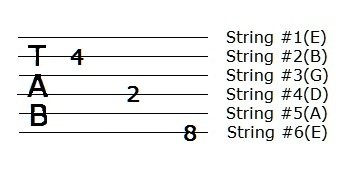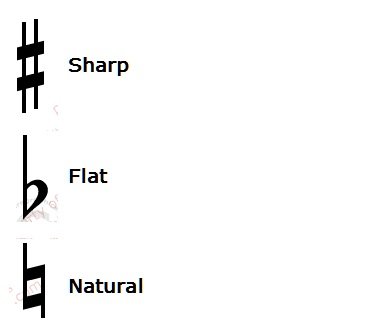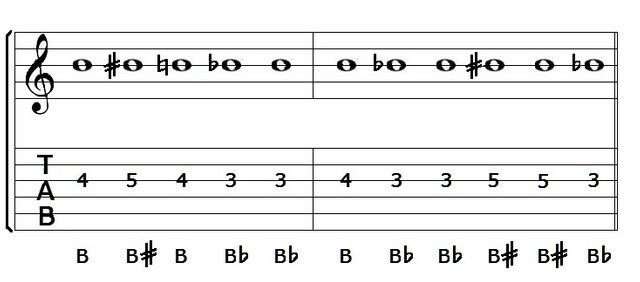Music Theory - Lesson #2
Last week I wrote about the bass and treble clefs and the grand staff along with the notes associated with the lines and spaces on each staff and the way to remember them. In case you missed it here is the link: https://steemit.com/music/@hurtinalbertin/music-theory-lesson-1
This week I will introduce you to Tabulature or Tab as it is usually called because it will make it easier for you to understand what I am explaining then I will go on to cover semitones, whole tones and accidentals as they relate to guitar.
These are simple concepts that you may already understand, but if you find that it is a lot to take in all at once, look it over carefully and don’t move on until you completely understand each concept fully. The objective here is to build a solid foundation of knowledge and build on it.
TABULATURE:
Tabulature is basically a picture of the strings on the guitar. Each line represents a string on the guitar and the numbers represent the fret number where you are to place your fingers. Just as on the musical staves shown in the previous lesson, the lower line in tabulature represents the lowest pitch string(E) or the sixth string on the guitar.

SEMITONES:
A semitone is the distance from one fret to the next fret on the guitar either up or down. A semitone can also be called a half step. For instance if you put your finger on the top string of the guitar at the fifth fret then move your finger up one fret to the sixth fret on the same string that is one semitone. Also if you put your finger in the top string of the guitar at the fifth fret then move your finger down one fret to the fourth fret on the same string that is one semitone.
WHOLE TONES:
A whole tone is two semitones. If you put your finger on the top string of the guitar at the fifth fret then move your finger up two frets to the seventh fret on the same string that is a whole tone. Also if you put your finger in the top string of the guitar at the fifth fret then move your finger down two frets to the third fret on the same string that is a whole tone.
ACCIDENTALS:
An accidental is a way of saying sharps, flats and naturals. These look like the picture below:

A sharp is used to raise a note one semitone or one fret on the guitar. A flat is used to lower a note one semitone or one fret on the guitar and a natural is used to cancel the effect of a sharp or flat. If a natural comes after a sharp it lowers the pitch of the note one semitone. If a natural comes after a flat, it raises the pitch of the note one semitone. This is demonstrated in the drawing below. In other words a natural is used to restore a sharpened or flattened note to it’s original pitch.
When a sharp or flat is encountered in written music, the note will remain sharp or flat until another accidental is ecountered or until the end of the current measure. The accidental will be written before the note on the staff.

I will stop here and we will continue next week with lesson #3. Please comment or write questions below.
Great stuff, we need more music posts. I would recommend using imgur or smething reliable as without images your posts will gain no traction
Are the images not visible?